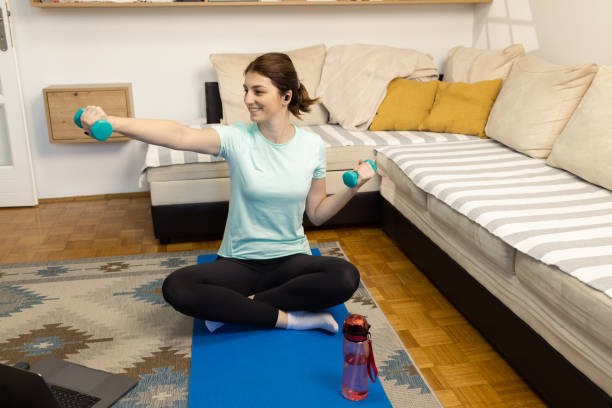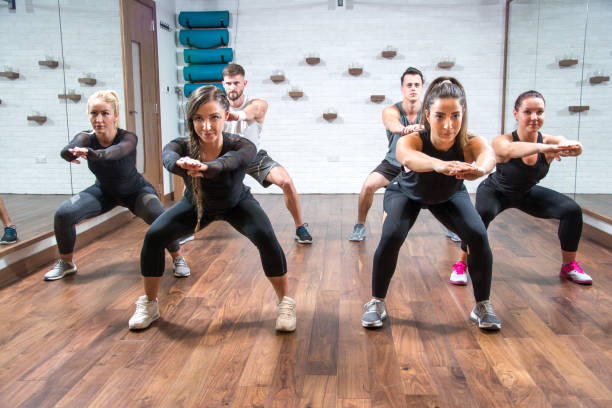The Dangers of Sitting Too Much and Ways to Stay Active. Explore natural weight loss remedies you can easily practice at home, discover healthy lifestyle changes perfect for beginners, and get daily health tips designed especially for seniors to enhance well-being.
What Happens to Your Body When You Sit for Too Long?
When you sit for extended periods, your body’s metabolism slows down, reducing calorie burning and fat accumulation. Your muscles, particularly in the legs and back, weaken and tighten, which can cause long-term issues like chronic pain. Blood circulation also slows, increasing the risk of blood clots.
Health Risks Associated with Sedentary Behavior
Prolonged sitting has been linked to a host of health problems, including obesity, cardiovascular disease, and type 2 diabetes. Research has shown that people who sit for more than 8 hours a day without physical activity are at a higher risk of dying from heart disease or cancer.
The Science Behind the “Sitting Disease”
The term “sitting disease” describes the health issues associated with a sedentary lifestyle. Studies have shown that even regular exercise may not counteract the adverse effects of sitting for prolonged periods. The human body is designed for movement, and sitting for too long disrupts many vital physiological processes.
Real-Life Case Studies and Research Findings
A study published in the American Journal of Epidemiology found that men and women who sat for more than 6 hours a day had a 20% and 40% increased risk of dying within 15 years, respectively, compared to those who sat for 3 hours or less. Additionally, a well-known case involved a software developer who experienced severe back pain and was diagnosed with deep vein thrombosis (DVT) due to his sedentary work lifestyle.
2. How Sitting Too Much Affects Tech Enthusiasts
The Specific Risks for Those in the Tech Industry
Tech enthusiasts, particularly those working in software development, IT, or other computer-based roles, are often required to sit for extended periods. This can exacerbate the risks associated with sedentary behavior. For instance, the risk of repetitive strain injuries (RSIs) increases, leading to conditions like carpal tunnel syndrome.
Mental Health Implications: Stress, Anxiety, and Depression
Sitting too much can also take a toll on your mental health. Studies have shown a correlation between sedentary behavior and increased levels of stress, anxiety, and depression. The lack of movement can lead to feelings of lethargy and reduce the production of mood-boosting neurotransmitters like endorphins.
Impact on Productivity and Creativity
Ironically, the very thing that tech enthusiasts are passionate about—technology—can lead to reduced productivity and creativity when sitting too much. Physical inactivity can lead to mental fatigue, reduced concentration, and even burnout, making it harder to think creatively and stay productive.
GRAB THE WEIGHT LOSS SECRETS HERE
3. How to Recognize If You’re Sitting Too Much
Signs and Symptoms to Watch Out For
Some common signs that you might be sitting too much include stiffness in the neck and shoulders, lower back pain, and reduced flexibility. You might also notice weight gain, particularly around the midsection, and a general feeling of lethargy.
How to Assess Your Daily Sitting Time
Consider keeping a daily log of your activities to assess your sitting time. Note how much time you spend sitting at work, during meals, commuting, and leisure activities. This can help you identify patterns and areas where you can reduce your sitting time.
Tools and Apps to Track Your Activity Levels
Several apps can help you monitor your sitting time and remind you to take breaks. Apps like Stand Up! The Work Break Timer and Stretchly offer customizable reminders to stand, stretch, and move throughout the day. Wearable devices like Fitbit or Apple Watch also provide insights into your daily activity levels.
4. Practical Tips to Stay Active
Workplace Solutions
Setting Up an Ergonomic Workspace
Creating an ergonomic workspace can help reduce strain on your body and encourage better posture. Ensure your chair provides proper lumbar support, your computer screen is at eye level, and your feet rest flat on the floor. Consider investing in an adjustable desk that allows you to alternate between positions.
Incorporating Standing Desks and Active Workstations
Standing desks are becoming increasingly popular in tech workplaces. These desks allow you to stand while working, reducing the time spent sitting. Active work sitting on timely desks or balance boards provides more dynamic ways to stay active while working.
The Importance of Regular Breaks: The Pomodoro Technique and Beyond
Taking regular breaks is crucial to combat the effects of prolonged sitting. The Pomodoro Technique, which involves working for 25 minutes followed by a 5-minute break, can help you stay focused while ensuring you move regularly. During breaks, try stretching, walking, or doing simple exercises.
At-Home Strategies
Exercises You Can Do While Sitting
Even when seated, you can engage in exercises to keep your exercises; seated marches and ankle circles are simple movements that can improve circulation and muscle tone. Desk yoga is another effective way to stretch and strengthen muscles without leaving your chair.
Home Workout Routines for Tech Enthusiasts
For those who work from home or spend a lot of time sitting, incorporating a home workout routine (HIIT), yoga, or bodyweight exercises like push-ups and squats can be beneficial. These routines can be completed in short bursts, making them easy to fit into your day.
Mindfulness Practices to Combat Mental Fatigue
Mindfulness practices, such as meditation and deep breathing exercises, can help reduce stress and mental fatigue associated with long hours of sitting. These practices can be done during breaks or while seated at your desk, promoting mental clarity and relaxation.
On-the-Go Tips
Staying Active During Commutes
If you commute to work, consider incorporating physical activity into your journey. Walking or cycling instead of driving or getting off public transport and stopping early to walk the rest of that stopping can add valuable movement to your day.
The Power of Walking Meetings
Walking meetings are a great way to combine work with physical activity. Instead of sitting in a conference room, take your meetings outside or walk around the office. This not only helps you stay active but can also boost creativity and collaboration.
Incorporating Physical Activity into Daily Routines
Look for opportunities to add more movement to your daily routines. Take the stairs instead of the elevator, quickly stretch while waiting for your computer to boot up, or walk around during phone calls. These small changes can add up to significant benefits over time.
5. Long-Term Strategies for a Healthier Lifestyle
Creating a Balanced Work-Life Routine
Achieving a balance between work and personal life is essential for long-term health. Set boundaries to ensure you have time for physical activity, hobbies, and relaxation outside of work. This balance can help reduce stress and prevent burnout.
Setting Realistic Fitness Goals
Setting achievable fitness goals can keep you motivated and on track. Whether you walk a certain number each day, complete a workout routine, or participate in a physical activity challenge, having goals can help you stay committed to an active lifestyle.
The Role of Diet in Combating the Effects of Sitting
Diet plays a crucial role in counteracting the adverse effects of sitting. A balanced diet rich in whole foods, lean proteins, and healthy fats can support overall health. Staying hydrated is also essential, as dehydration can lead to fatigue and reduced focus.
6. Conclusion
The Importance of Taking Action Now
The dangers of sitting too much are real and can have severe implications for your health and well-being. However, taking proactive steps to incorporate more movement into your day can mitigate these risks and improve your overall quality of life.
Encouraging a Culture of Movement in the Tech Industry
As tech enthusiasts, it’s important to recognize the impact of essential lifestyles and advocate for a culture of movement within the industry. Employers can play a role by promoting active workspaces and encouraging regular breaks.
Final Thoughts and Call to Action
Remember, your health is in your hands. Take action today to reduce your sitting time, stay active, and prioritize your well-being. There are countless ways to stay active and maintain a healthy, balanced lifestyle, whether at work, home, or on the go.
















Leave a Reply